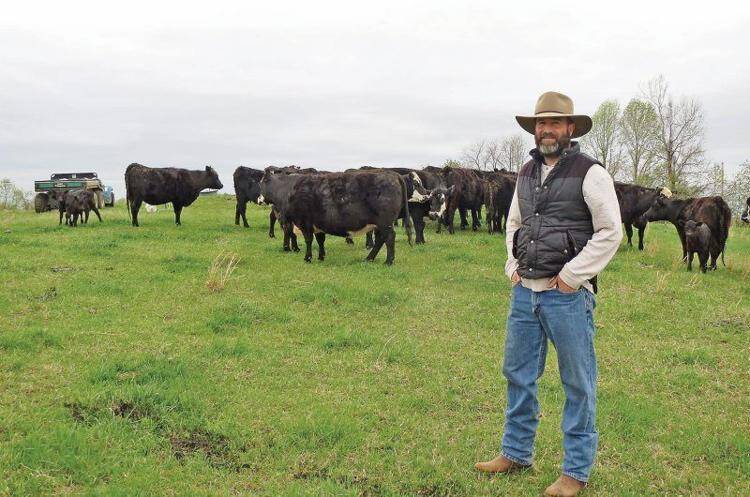Jason Leavitt is the fourth generation to work his family farm situated between the Chesapeake Bay and the Patuxent River in Owings, Maryland. Leavitt transitioned from mostly grain to grassfed beef, but with no trees in his pasture, he needed shade.
“I tried to construct my own with hay wagons, but once we had a thunderstorm it pretty much got annihilated,” says Leavitt. “I needed a legitimate mobile shade, so I looked around the internet and found Shade Haven.”
That was five years ago. Today this rotational grazier couldn’t be happier. “The Shade Haven pretty much enables us to do what we do,” says Leavitt. “From late May to mid-September, it is not unheard of for temps to be in the 90s, even 100 degrees. We run black Angus, and I, in good conscience, can’t send them out in the fields when it is 100 degrees and let them bake.”
Leavitt moves his 75 Angus daily. “I have to have something I can move from field to field with them. The Shade Haven works awesome. It’s phenomenally easy to use.”
After five years with a Shade Haven, Leavitt wouldn’t want to graze without it. Neither would his cows, who Leavitt says choose to be under the Shade Haven even in paddocks with natural shade. “I think that is because there is natural convection, there is always somewhat of a breeze or air movement under there.”
The Shade Haven keeps the cows cool, happy and healthy, and it helps Leavitt maintain a healthy pasture. “With the Shade Haven, you have complete control of where the majority of the nutrients are disseminated – especially when it is hot outside,” he adds.
Though he hasn’t kept detailed records on production and conception rates, Leavitt is confident that both have improved since adding mobile shade. Last year was a record year for calves born on his farm. “We had 36 brood cows and 34 calves. That is the first time that has ever happened. Whether that is related to the Shade or the bull, I’m not exactly sure, but something is working out right.”
At the end of the grazing season, Leavitt will clean up his Shade and store it in his barn to prevent damage from snow and ice. He knows that with basic upkeep his SH1200 will be ready for another grazing season. “Just regular maintenance, greasing it, oiling it. I power wash it at the end of each year and put it away correctly in the winter. I’m amazed at the minimal amount of maintenance and attention it needs.”
To find out more about Leavitt’s farm, check out his website, wilsondowellfarms.com. He sells his grassfed beef, pork and goat products through the website and through Southern Maryland Meats.
